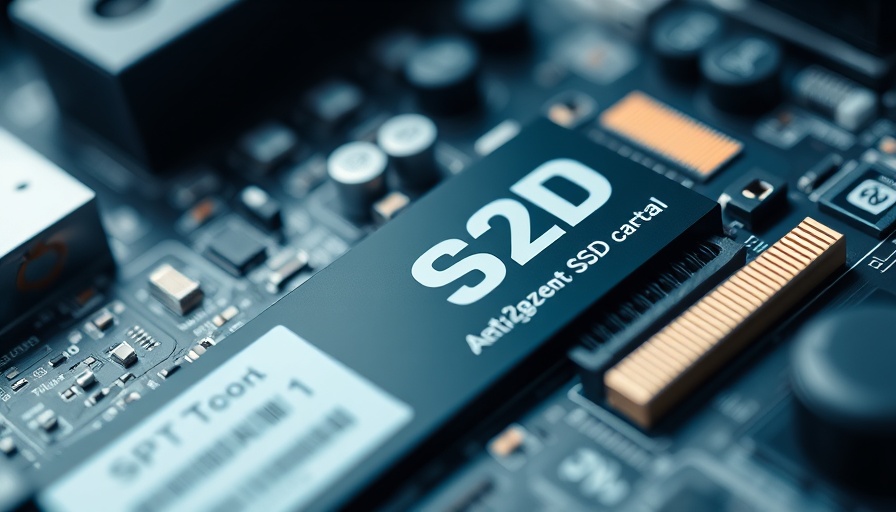
Is the Era of Pre-Built SSDs Ending? Here’s Why It Matters
The landscape of storage devices is changing rapidly, and a notable shift has emerged among consumers who once gravitated towards pre-built SSDs. Recent criticisms have not only spotlighted issues of pricing but have also raised pivotal questions about control, performance, and customization in technology. Whether you’re a business leader, entrepreneur, or professional, understanding this transition can enhance the way you manage your data storage.
Understanding M.2 Technology: Why It’s a Game Changer
At the heart of this evolution in storage solutions is M.2 technology, recognized for its compact design and high-speed performance. Unlike pre-built SSDs that come as packaged solutions, M.2 drives paired with custom enclosures offer unparalleled speed and flexibility. For example, the Ugreen M.2 NVMe enclosure is known to provide remarkable speeds of up to 40Gbps. This is not just about specs; it’s about giving consumers the freedom to build a storage solution that caters specifically to their needs.
The Cost Factor: Are You Overpaying for Convenience?
In the cost discussion, many assume that pre-built SSDs are cheaper. While they might appear more economical initially, investing in an M.2 drive and enclosure can be more cost-effective in the long run. Market analyses indicate that assembling your own components often leads to greater savings without sacrificing quality. This trend reflects a growing realization among professionals that investing in hardware with a focus on value rather than simply price can yield better performance outcomes.
User Experiences: Real-Life Impacts of Building Custom Solutions
As more users share their stories of transitioning from pre-built to custom SSDs, a clear pattern emerges: many enjoy fewer compatibility issues and improved read/write speeds. Not just a technical upgrade, this shift fosters a deeper understanding of computer architecture, allowing users to take charge of their technological landscape and enhance their confidence as tech-savvy professionals.
Comparative Analysis: Pre-Built vs. Custom SSDs
A comparative analysis between pre-built SSDs and self-assembled options reveals significant disparities. Custom-built SSDs frequently outperform their pre-built counterparts concerning benchmark scores and thermal management. For professionals needing high performance for tasks like video editing or large data handling, relying on brands like Ugreen can tailor storage solutions that precisely fit their operational needs.
What’s Next? Future Predictions for SSD Technology
The future of SSD technology promises even more innovation. As we anticipate advancements such as USB5, consumers must stay informed about how these changes impact storage capabilities. Understanding these trends not only prepares users for upcoming changes in technology but also empowers them to make informed decisions that align with their business goals.
Your Next Steps: Empower Your Storage Decisions
This shift towards custom-built SSDs is indicative of broader trends in technology and consumer behavior. By embracing this transformation and exploring M.2 drives and enclosures, professionals can optimize their storage solutions while also enhancing their technological expertise. As you navigate your digital landscape, consider this your call to action: Discover how to become the signal in your market.
 Add Row
Add Row  Add
Add 




Write A Comment